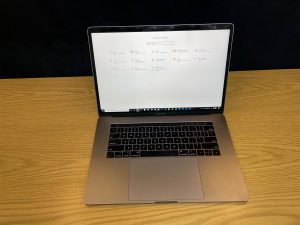Where did all that stimulus money go?
Between the Federal Reserve’s monetary actions and Congress’s fiscal spending, an estimated $8 trillion has entered the economy since the pandemic started. So where does that money go and where does it end up? Here is a quite simple idea of where it is and what may be its future.
The money from both parts of government enters the economy in separate ways, but both influence Final Demand (FD)-What we spend money on. Fiscal dollars put money into projects that pay workers and purchase the necessary goods to complete. Monetary actions work by increasing the number of dollars the system (read banks) can make available for lending and investing. During the pandemic, the two combined to inject $8tril (give or take) into the economy which helped keep things running best they could in an economic and social lockdown.
So, workers are paid not to work, some monthly living expenses (rent) are forgiven, businesses receive assistance for trying to keep workers and yet, we’re not able to go out spend that money. So, we save it for the day we can spend it. During this time, the businesses and workers that supply Final Demand, known as Intermediate Demand (ID), are shrinking as FD crashes and reach a place where ramping up again is not possible in the short run. Yet, the government continues to spend big to increase FD. And therein lies the rub.
The market is up $7.7 trillion, the government created $8 trillion, and the economy is still not up to the standard it was before the pandemic. If Mr. Icahn is right and a correction is imminent, it seems the top 1% will bear 89% of the damage it causes. And with the excess gone, the real economy can recover its mojo and get people working again without excess help from the government.
In past posts, I’ve highlighted activity in the ‘real economy’, where the balance between supply and demand (S&D) is achieved through changing prices. Now for the rest of the story… Government spending and taxation are external influences on the real economy. If the real economy cannot accommodate an externality such as significant injections of money, it establishes the real price anyway. It’s just the value of the dollars that changes. The excess dollars, like water seeking its own level, stream through the markets until they find their own low spot.
During my research for this post, I ran across two weirdly connected articles. One was Carl Icahn’s comments on rising inflation and printing money and the possible crisis correction in the markets could be in our future. The other article was an analysis of stock ownership in the U.S.
I’ve followed Mr. Icahn for years. He has a keen eye for the value his target investments will have in 2-5 years. In this article, his comments center on the impact inflation and government money printing will have in the longer term. Essentially, he sees a major market correction coming. Then I ran across an article analyzing the economic status of owners of stocks in the U.S. The data shows that the wealthiest 10% of Americans own 89% of all U.S. stocks. The connection is made!
The government injected $8 trillion into an economy that does not have the foundation to accommodate any more demand. Also, during the pandemic, $7.7 trillion (give or take) in value was ‘created’ in U.S. equities, with the top 1% receiving over $6.5 trillion of that increase, with the other 99% of us regular workers receiving the $1.2 trillion balance.
It seems we are in some sort of liquidity trap, where the excess liquidity the government pumps into the economy can do nothing productive, so until that excess is ‘purged’ from the system, inflation is a forgone conclusion (too much money chasing too few goods). I agree with Mr. Icahn. There will be a stock market correction, the top 1% will feel it the worst and the excess liquidity will be purged. From there, the real economy can again work toward satisfying Final Demand at fair prices.






No comments! Be the first commenter?